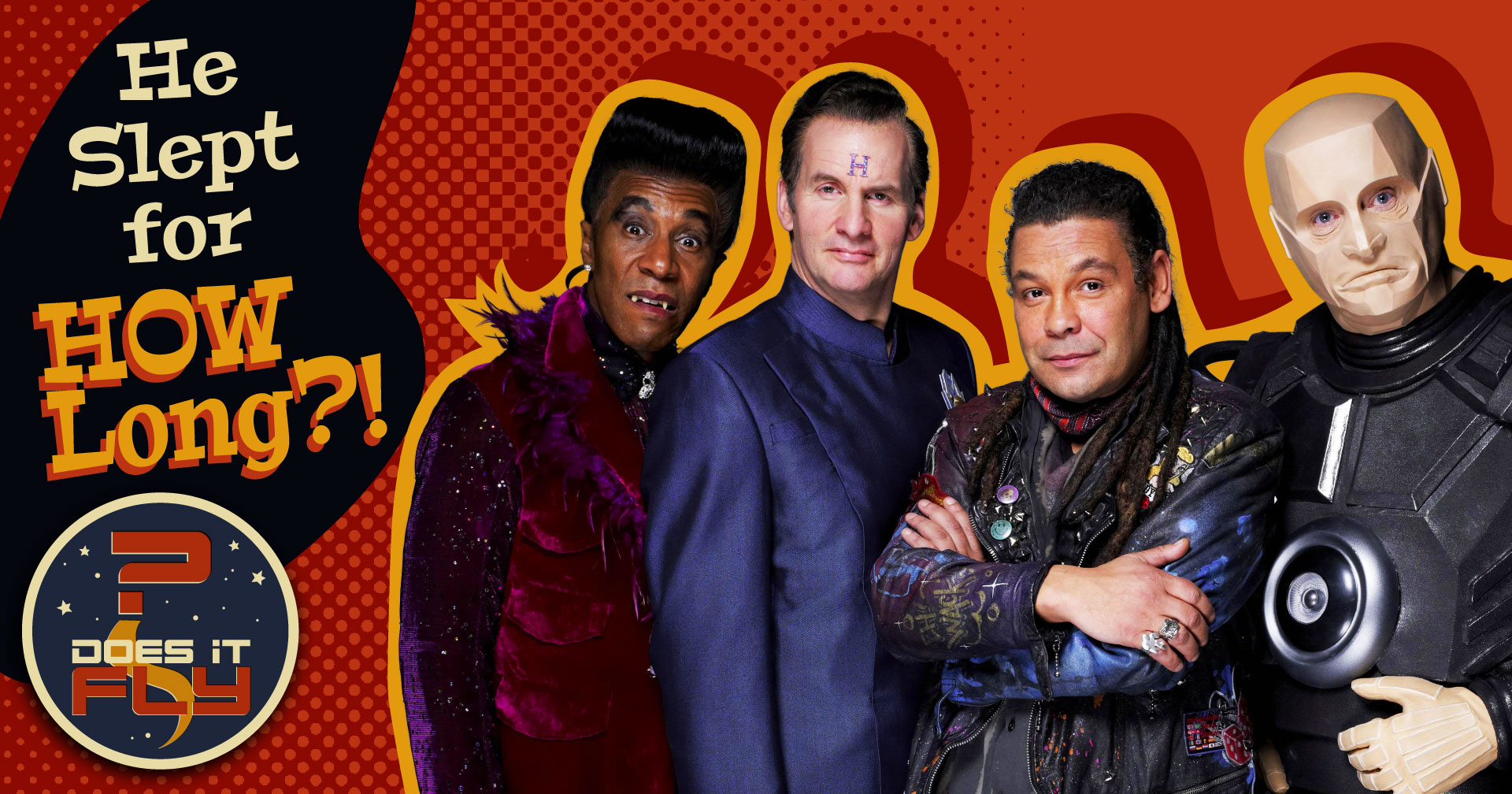Red Dwarf: What Does Stasis Technology Do?
The central concept of Red Dwarf is the fact that a main character was put in stasis for three million years. We look at all the ways could (or couldn’t) work.
This episode of Does it Fly? is presented by ScreenUK. ScreenUK is a free discovery platform celebrating the very best of UK-produced film, television, animation and gaming and sharing it with audiences around the world. ScreenUK is the go-to place to discover your next favorite movie, show, or game and features tons of exclusive behind-the-scenes interviews and all the info you need to find out how and where to watch or play your newest obsessions, wherever you are in the world. Make ScreenUK.org your next stop.
The very crux of beloved sci-fi comedy Red Dwarf comes from how Dave Lister was kept in time stasis for three million years (yes, you read that right) emerging only after a radiation leak killed the rest of the crew.Thus, the series follows Lister—the last living human—as well as a hologram of his old coworker (Rimmer), a humanoid creature who evolved from the offspring of Lister’s smuggled pet cat (Cat), the sanitation android (Kryten), and the ship’s computer (Holly).
At its most functional, the Stasis Booth from Red Dwarf and related technology is meant to keep people from dying of old age during long interstellar voyages. We look at the scientific feasibility of placing living beings in states of suspended animation for long periods of time to slow down or prevent aging, a concept that you probably already know well from when it has appeared elsewhere in popular culture, including 2001: A Space Odyssey, Alien, and Futurama. What parallels are there to hibernation as we know it in nature? How does Einstein’s Special Theory of Relativity factor into this? And what unique combination of sci-fi high concept and cult appeal has made Red Dwarf such an enduring success? Oh yeah, and we might as well discuss what a “red dwarf” actually signifies, too, while we’re at it!
All these questions and more will be answered (or at least discussed) in the latest episode! Remember that you can join in on the conversation in the comments on our YouTube page, so be sure to like, subscribe, and come back for more!
FURTHER READING
Do you want to delve a little deeper into the facts, concepts, and stories Hakeem and Tamara referenced in today’s episode? Here are a few recommendations!
“Well, that’s the show, but the red dwarf itself is the smallest type of star, and the most common type of star in our galaxy. There are tens of billions of them.”
See also: The Transit Method.
“When Albert Einstein figured out E=MC2, he said there isn’t really this thing called mass, there’s just all energy. So the existence of mass means the existence of energy. But here’s where I’m going to go out on a limb…to me, saying energy exists is the same as saying time exists.”
Einstein’s Theory of Relativity
“Right now, you and I are at rest relative to each other. We’re both sitting here on our computers. Which means that together, we’re moving through space at zero, and we’re moving through time at the speed of light. But if you were to take off in the Red Dwarf going 90% of the speed of light relative to me, everything on board is still in the same time zone as you are. But now you’ve put so much motion through space that your motion through time, relative to me, has been reduced, but not to the things traveling with you in the spaceship.”
“According to genetic evolution studies, the ancestor of all mammals hibernated and there is a hibernation gene in all mammals. Humans, apparently, 400,000 years ago appear to have had the ability to hibernate.”
“These nematodes [are multicellular organisms that were recovered from permafrost] and they’re tens of thousands of years old.”
The source of the famed “hell is other people” which Tamara references in discussion about the themes of Red Dwarf.
SUGGESTED VIEWING
Virtually everything discussed in this episode can be gleaned from watching the first episode of the series, 1988’s ironically titled “The End.” That being said, these are short episodes and short seasons of TV, so you may as well watch the entire first season (or “series” as they’re called in the UK) to get a better sense of the overall flavor of the show. The entire series is currently streaming for free on Tubi, so you may as well go press play on “The End” right now.
FOLLOW US!
Stay in the loop! Follow DoesItFly? on YouTube and TikTok and let us know what you think!
And don’t forget to follow Roddenberry Entertainment:
Instagram: @RoddenberryOfficial
Facebook: Roddenberry
Twitter: @Roddenberry
*Roddenberry Entertainment participates in affiliate programs and may receive a small commission for links on this page*
For Advertising Inquiries: doesitfly@roddenberry.com
MORE EPISODES

Star Wars: What Are Lightsabers Really Made Of?
The most iconic weapon in all of science fiction, the lightsaber from Star Wars, is also one of the most technically, scientifically, and even story logic complex, as well. It’s time to dive in and figure out just how realistic it might be.

The Wolf Man and the Science of Werewolves
The Wolf Man explores a disturbingly realistic vision of what it would take to turn a man into a werewolf. Does this horror movie have any basis in science fact? Do werewolves and wolf men even obey their own story rules?

Wicked: Why is Elphaba Green?
Wicked gives us the secret origin of the Wicked Witch of the West from The Wizard of Oz. We dive a little deeper into what makes her so unique.


